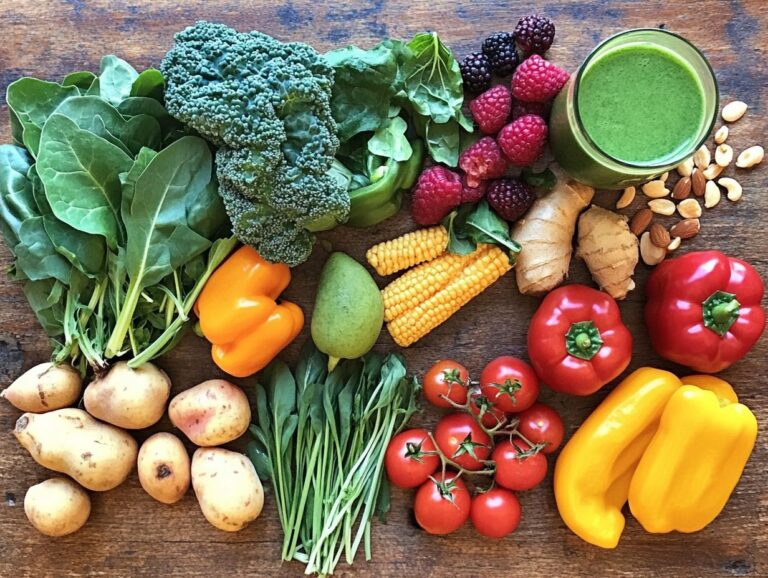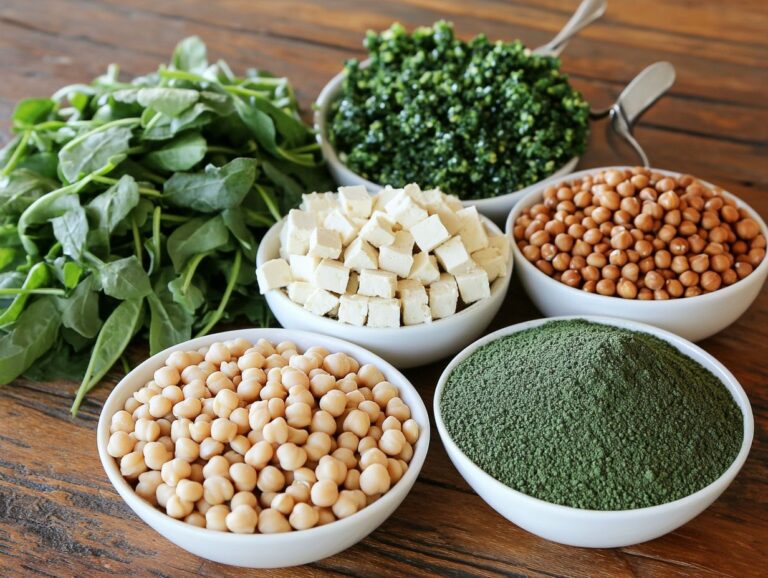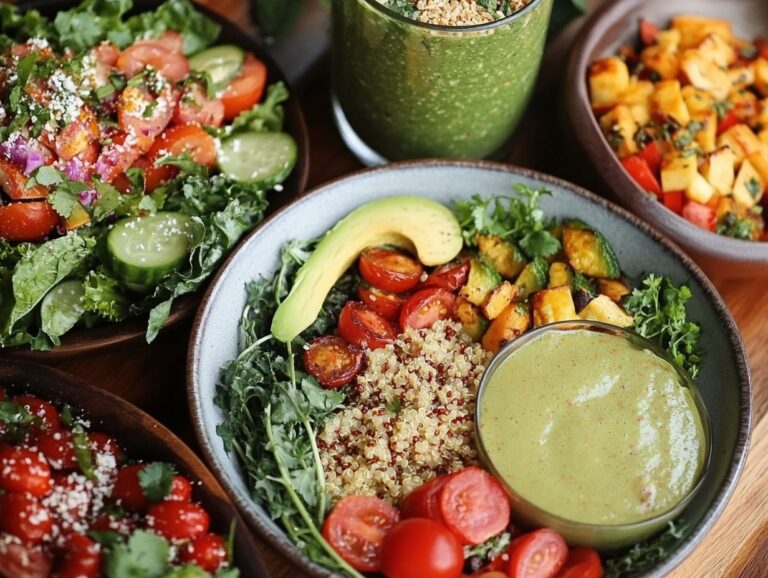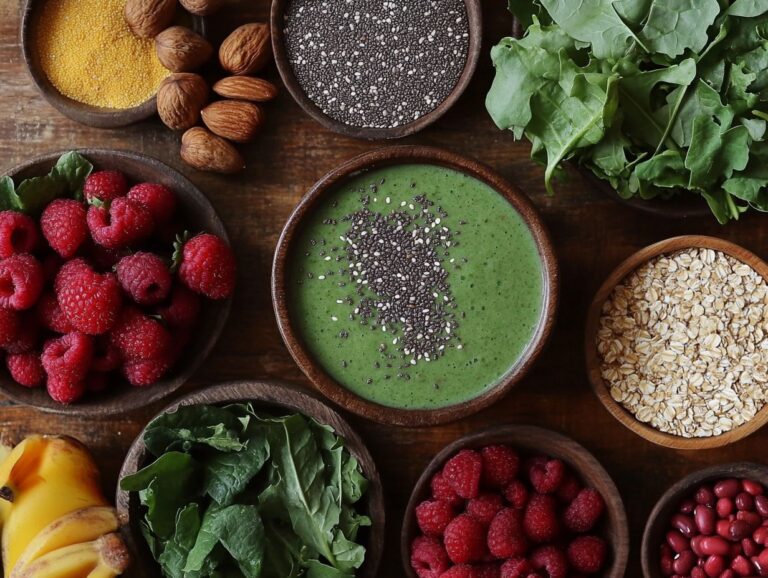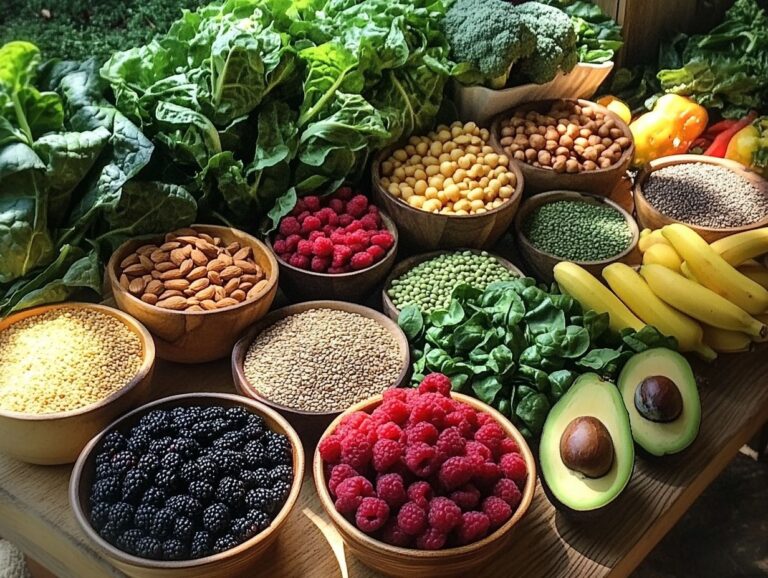A vegan diet is an increasingly popular dietary pattern, valued not only for its ethical and environmental benefits but also for its perceived positive effects on health, particularly regarding blood sugar levels and metabolic fitness. This article explores what a vegan diet entails, its impact on blood sugar, and the associated health benefits and risks of adopting this lifestyle choice. It offers tips for managing blood sugar while following a vegan diet, along with blood sugar-friendly recipes and healthy meals to facilitate the transition and ensure that the eating experience remains enjoyable and satisfying. The article concludes with a discussion on how quickly a vegan diet can help lower blood sugar levels and improve insulin resistance.
Key Takeaways:
- A vegan diet can help lower blood sugar levels due to its emphasis on whole foods and high-fiber foods.
- Limiting processed foods, processed sugars, and sugary drinks and staying hydrated are also important factors in reducing blood sugar levels on a vegan diet.
- Incorporating regular exercise and trying out delicious vegan recipes can also contribute to quickly lowering blood sugar levels on a plant-based diet.
What is a Vegan Diet?
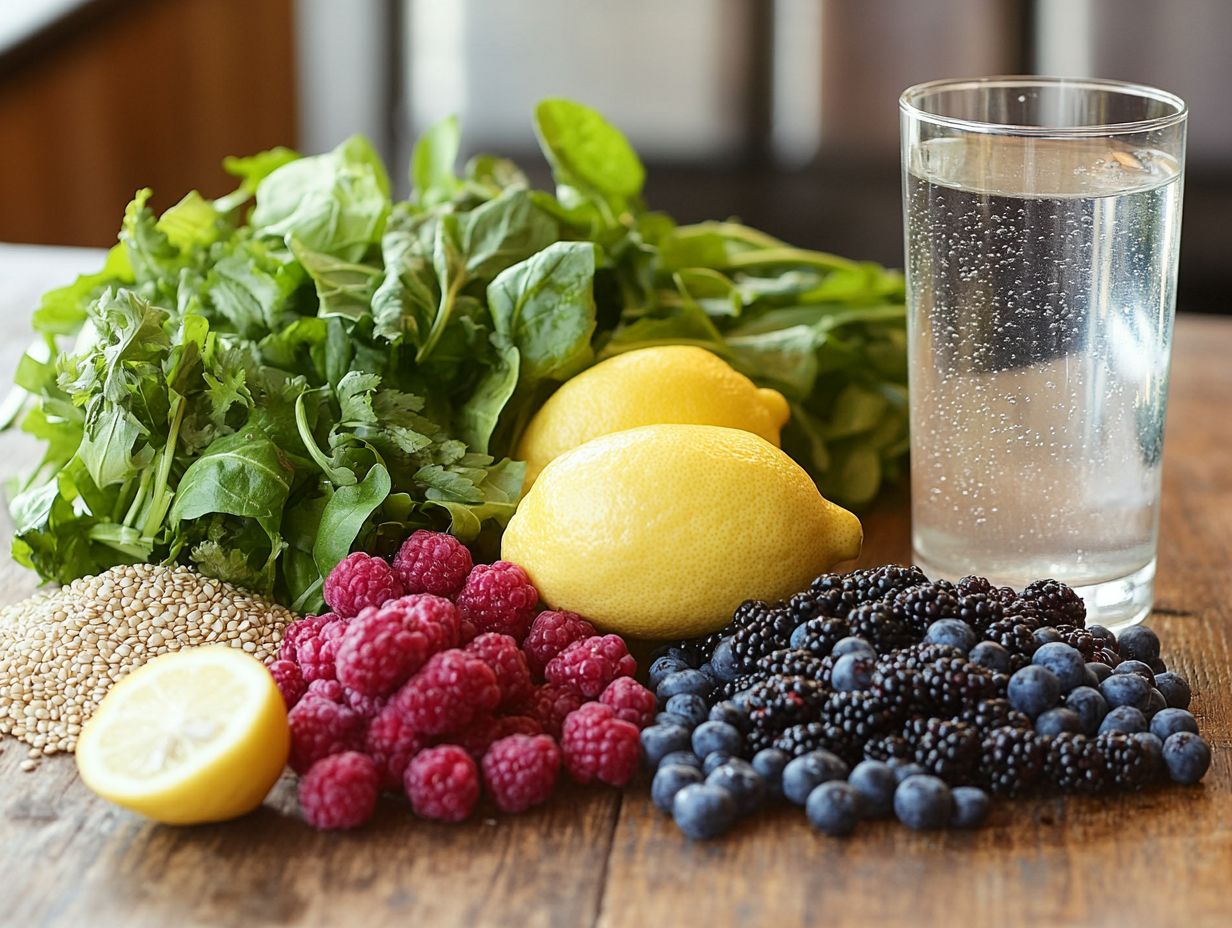 A vegan diet is a type of plant-based diet that excludes all animal products, including meat, dairy, and eggs, while emphasizing a wide variety of healthful foods such as fruits, vegetables, whole grains, legumes, nuts, and seeds. Dairy alternatives and fortified foods can help meet nutritional needs. People choose to follow a vegan diet for various reasons, including ethical, environmental, or health considerations. This diet prioritizes the consumption of nutrient-dense foods, which can lead to significant health benefits, such as a reduced risk of chronic illnesses like type 2 diabetes and enhancements in metabolic fitness. Research indicates that adhering to a vegan diet can improve metabolic fitness and decrease the incidence of obesity, hypertension, hyperlipidemia, cardiovascular disease, metabolic syndrome, and certain types of cancer. However, it is essential to ensure an adequate intake of protein, calcium, iron, and vitamin B12, which are typically found in animal products. These nutrients can be sourced from fortified foods, dietary changes, or supplements.
A vegan diet is a type of plant-based diet that excludes all animal products, including meat, dairy, and eggs, while emphasizing a wide variety of healthful foods such as fruits, vegetables, whole grains, legumes, nuts, and seeds. Dairy alternatives and fortified foods can help meet nutritional needs. People choose to follow a vegan diet for various reasons, including ethical, environmental, or health considerations. This diet prioritizes the consumption of nutrient-dense foods, which can lead to significant health benefits, such as a reduced risk of chronic illnesses like type 2 diabetes and enhancements in metabolic fitness. Research indicates that adhering to a vegan diet can improve metabolic fitness and decrease the incidence of obesity, hypertension, hyperlipidemia, cardiovascular disease, metabolic syndrome, and certain types of cancer. However, it is essential to ensure an adequate intake of protein, calcium, iron, and vitamin B12, which are typically found in animal products. These nutrients can be sourced from fortified foods, dietary changes, or supplements.
How Does a Vegan Diet Affect Blood Sugar Levels?
A vegan diet can significantly influence blood sugar levels, particularly for individuals with type 2 diabetes or those at risk of developing insulin resistance. Following dietary guidelines and advice from a registered dietitian can optimize these benefits. This effect is largely due to the emphasis on whole foods and the consumption of fiber-rich vegetables, fruits, legumes, nuts, and whole grains, all of which promote lower glycemic responses. These foods can help regulate glucose levels and improve metabolic health. Dietary changes recommended by registered dietitians and organizations like the American Diabetes Association and the American Heart Association can enable individuals to take advantage of the health benefits associated with a plant-based diet on blood sugar levels.
What Are The Benefits of a Vegan Diet for Blood Sugar Levels?
The benefits of a vegan diet on blood sugar levels are significant, particularly for individuals with type 2 diabetes or insulin resistance. A plant-based diet that includes whole grains, legumes, vegetables, fruits, nuts, and seeds has been shown to enhance insulin sensitivity and improve glycemic control. The nutrient-dense foods found in a vegan diet may also reduce the risk of obesity and other metabolic disorders, thereby enhancing overall health and well-being. Foods like quinoa, lentils, and sweet potatoes, which are high in fiber and low on the glycemic index, contribute to a steady release of energy. Scientific studies indicate that individuals following a vegan diet often have lower fasting blood glucose levels and improved long-term hemoglobin A1c. Additionally, the high concentrations of antioxidants in fruits such as berries and vegetables like spinach may aid in improving cellular function and reducing inflammatory responses, both of which are crucial for maintaining proper blood sugar levels. By incorporating a wide variety of plant-based options, individuals can boost their vitality while effectively regulating their blood sugar levels.
What Are The Risks of a Vegan Diet for Blood Sugar Levels?
A vegan diet carries certain risks, including potential negative effects on blood sugar levels. When individuals transition to a plant-based diet, they may inadvertently consume processed foods that contain added sugars and unhealthy fats, leading to spikes in glucose levels. Without the guidance of registered dietitians or diabetes educators, some people may struggle to ensure they are obtaining the necessary nutrients, which can hinder their ability to maintain balanced blood sugar levels. Using a glucose monitor can help track progress. This may result in a deficiency of protein or essential fatty acids, both of which are vital for overall health and energy maintenance. Additionally, a variety of whole foods such as legumes, whole grains, fruits, and vegetables are often overlooked, even though they are essential for regulating glucose levels. For those who need to monitor their blood sugar, being mindful of portion sizes and the glycemic index of vegan-friendly foods is important. Consistent glucose monitoring, combined with a balanced diet, is crucial for effectively managing the risks associated with a vegan diet.
How Quickly Can a Vegan Diet Lower Blood Sugar Levels?
The extent and speed at which a vegan diet can lower blood sugar levels can vary from person to person. This variability depends on factors such as the baseline severity of insulin resistance, adherence to dietary changes, and overall health status, including metabolic fitness. Many individuals with type 2 diabetes may observe improvements in their glucose levels within weeks of adopting a plant-based diet, provided they focus on whole foods and maintain their nutrient intake. Collaborating with a registered dietitian can assist them in determining the best approach tailored to their specific needs, focusing on plant-based foods and minimizing processed foods.
What Factors Affect the Speed of Blood Sugar Level Reduction?
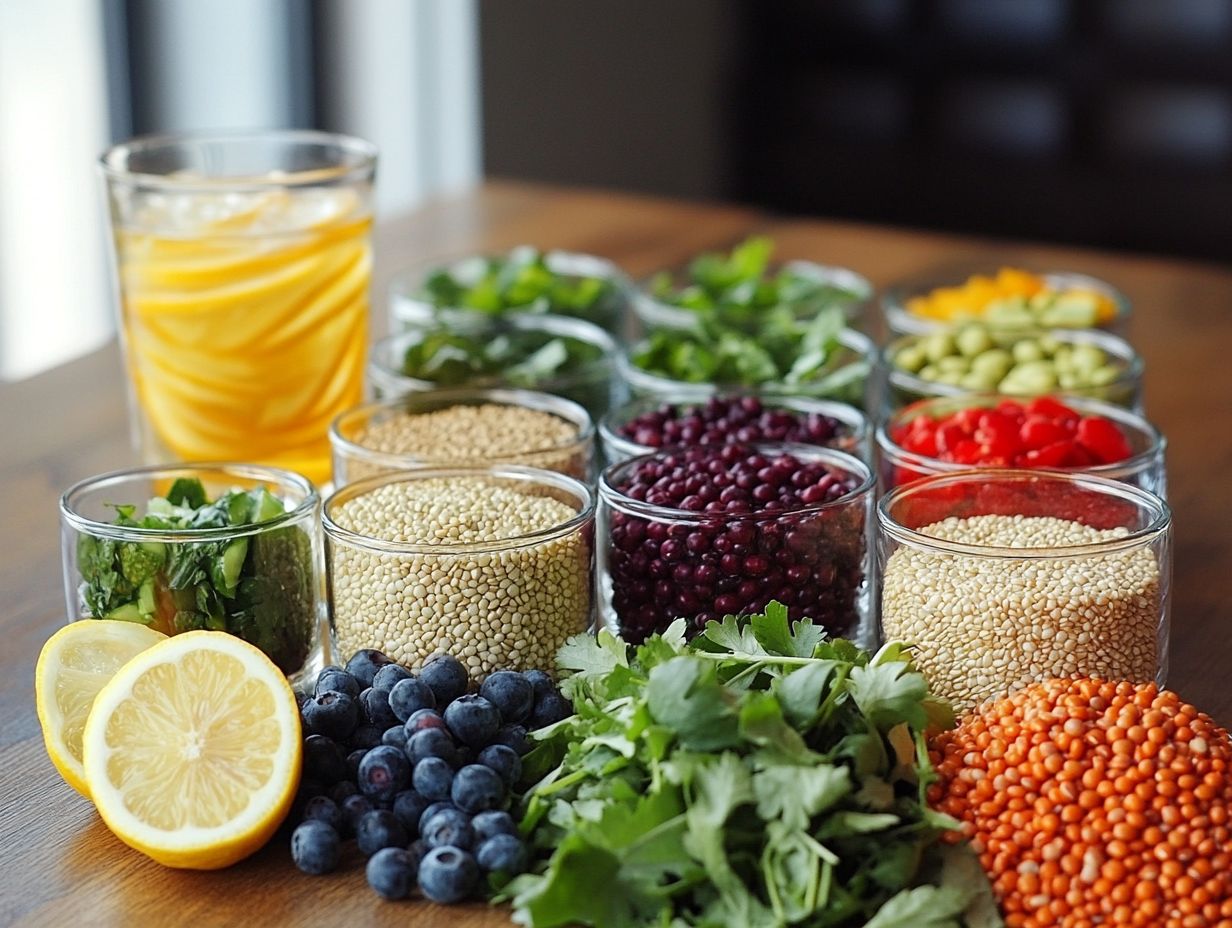 The speed at which blood sugar levels decrease after switching to a vegan diet is influenced by various factors, including the types of foods consumed, exercise habits, and other lifestyle modifications. Consuming primarily whole foods like vegetables, fruits, and legumes has been shown to enhance insulin sensitivity and facilitate quicker reductions in blood glucose levels. In contrast, diets high in processed foods can hinder this progress. Regular physical activity, proper hydration, and adequate sleep are also crucial components for achieving optimal blood sugar management. For instance, high-fiber foods such as quinoa and black beans provide sustained energy and help minimize rapid spikes in blood sugar. Additionally, meal timing plays a significant role; spacing out meals to avoid excessive hunger can help lessen the severity of blood glucose peaks. Stress management techniques, such as mindfulness practices, can also positively impact blood sugar levels by helping to regulate hormonal balance, improving insulin effectiveness. Furthermore, considering the glycemic index of foods is essential, as those with a lower glycemic index tend to cause slower increases in blood sugar, resulting in a more balanced diet. Together, these interrelated factors create a comprehensive system for effective blood sugar control.
The speed at which blood sugar levels decrease after switching to a vegan diet is influenced by various factors, including the types of foods consumed, exercise habits, and other lifestyle modifications. Consuming primarily whole foods like vegetables, fruits, and legumes has been shown to enhance insulin sensitivity and facilitate quicker reductions in blood glucose levels. In contrast, diets high in processed foods can hinder this progress. Regular physical activity, proper hydration, and adequate sleep are also crucial components for achieving optimal blood sugar management. For instance, high-fiber foods such as quinoa and black beans provide sustained energy and help minimize rapid spikes in blood sugar. Additionally, meal timing plays a significant role; spacing out meals to avoid excessive hunger can help lessen the severity of blood glucose peaks. Stress management techniques, such as mindfulness practices, can also positively impact blood sugar levels by helping to regulate hormonal balance, improving insulin effectiveness. Furthermore, considering the glycemic index of foods is essential, as those with a lower glycemic index tend to cause slower increases in blood sugar, resulting in a more balanced diet. Together, these interrelated factors create a comprehensive system for effective blood sugar control.
What Are Some Tips and Tricks for Lowering Blood Sugar Levels on a Vegan Diet?
Practical tips and tricks for lowering blood sugar levels on a vegan diet include adhering to a whole foods approach, managing stress, staying adequately hydrated, engaging in regular exercise, and monitoring glucose levels with a glucose monitor. Following a whole foods diet, rich in vegetables, fruits, legumes, nuts, and seeds, is one of the most effective and straightforward methods to reduce blood sugar levels. This entails consuming high-fiber foods, such as vegetables, fruits, nuts, and seeds, while avoiding processed foods and sugary beverages that can lead to glucose spikes. Additionally, drinking plenty of water and exercising regularly are important strategies for enhancing insulin sensitivity and helping to regulate metabolism.
1. Focus on Whole Foods
Consuming whole foods is essential for maintaining stable blood sugar levels on a vegan diet, as these foods are richer in nutrients and fiber. A diverse intake of fruits, vegetables, legumes, nuts, and seeds ensures a wide range of vitamins and minerals, while also enhancing satiety and effectively regulating glucose levels. Whole foods contribute to a balanced and healthy diet. Whole grains, such as quinoa and brown rice, offer complex carbohydrates that digest more slowly, helping to prevent spikes in blood sugar levels, crucial for managing type 2 diabetes. Leafy greens and cruciferous vegetables, like kale and broccoli, are rich in important nutrients and add bulk to meals, promoting a sense of fullness without adding excess calories. Legumes, such as lentils and chickpeas, are excellent sources of protein and fiber, making them ideal choices for individuals concerned about blood sugar management and insulin sensitivity.
2. Incorporate High-Fiber Foods
High-fiber foods play a crucial role in a vegan diet for blood sugar regulation, as fiber helps slow the absorption of sugars into the bloodstream. Legumes, whole grains, vegetables, and fruits are rich in dietary fiber and are essential for achieving adequate insulin sensitivity and blood glucose control. Moreover, consuming an amount of fiber that meets or exceeds dietary recommendations contributes to improved overall health and quality of life. These foods not only help regulate blood sugar levels but also support digestive health and promote healthy weight management. Research indicates that including beans and lentils in meals can enhance feelings of fullness due to their high protein and fiber content, while also preventing sudden spikes in blood glucose levels. Whole grains, such as quinoa and oats, provide complex carbohydrates that facilitate a gradual release of energy. Fruits like berries and apples, which are high in fiber and antioxidants, further aid in maintaining stable blood sugar levels. Nuts and seeds can also provide additional fiber and healthy fats to support this process. Overall, a balanced, high-fiber vegan diet serves as an effective strategy for individuals looking to enhance their metabolic health and manage type 2 diabetes.
3. Limit Processed Foods and Sugary Drinks
Limiting processed foods and sugary drinks is a crucial step in managing blood sugar levels on a vegan diet. These products often contain high amounts of added sugars and unhealthy fats, which can lead to spikes in blood glucose. By focusing on whole foods and making other dietary adjustments, individuals can better control their blood sugar levels and reduce the risk of insulin resistance, metabolic syndrome, and obesity. To effectively limit processed foods and sugary drinks, the first step is to read labels and select items that align with healthy eating practices as recommended by the American Diabetes Association. Overreliance on these types of products can lead to energy crashes and cravings, making it more difficult to maintain a healthy, balanced diet. Whole grains, legumes, and a variety of fruits and vegetables provide essential nutrients without the risk of causing dangerous spikes in blood glucose levels. Incorporating sources of healthy fats, such as avocados, nuts, and seeds, can help individuals feel full and stabilize their energy levels. To further limit the intake of sugary drinks and processed sugars, healthier alternatives like herbal teas or flavored water can be enjoyed, offering a satisfying option without the negative effects of added sugars.
4. Stay Hydrated
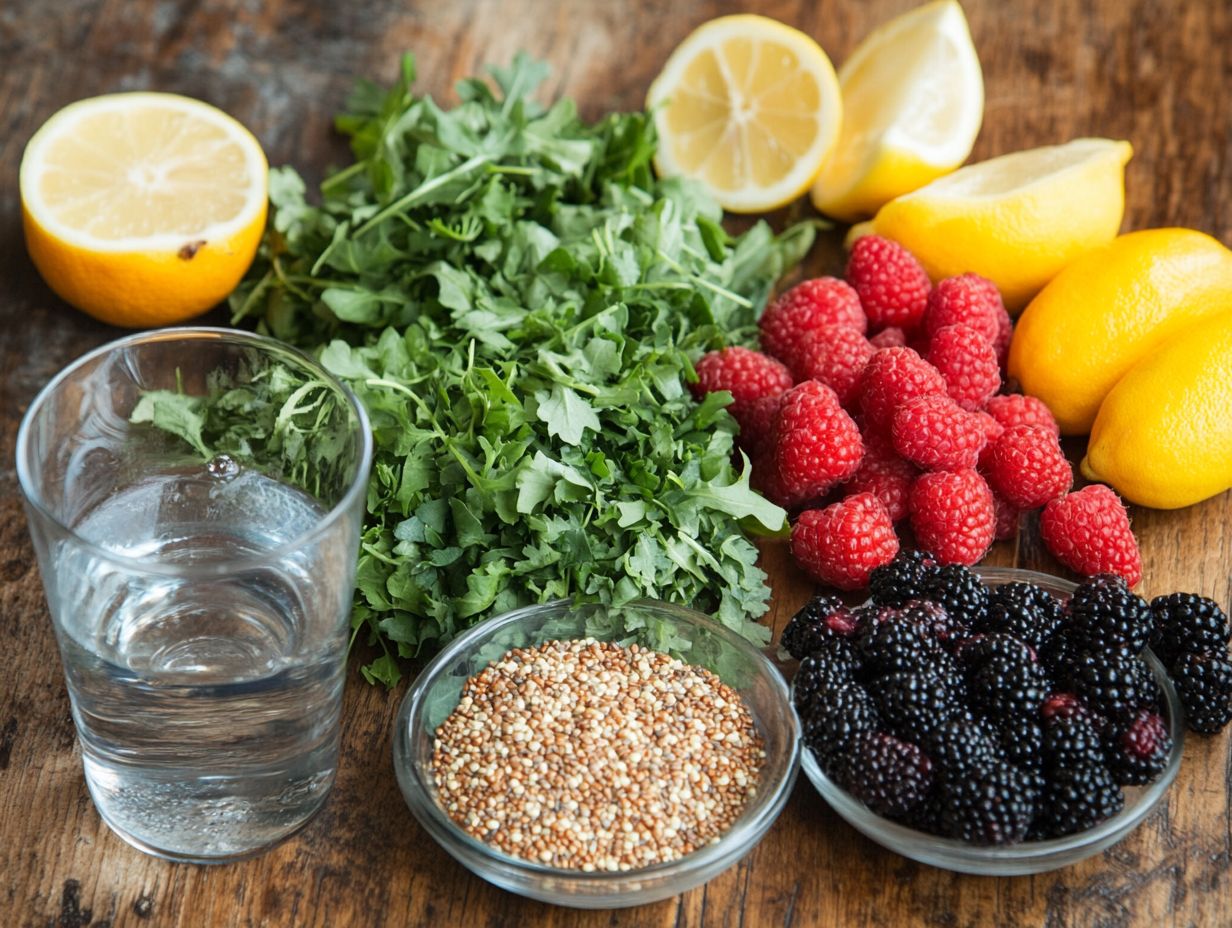 Hydration plays a crucial role in managing blood sugar levels. Adequate fluid intake is essential for proper metabolic function, including the regulation of glucose levels, and helps support overall metabolic fitness. When the body is sufficiently hydrated, it can process nutrients more effectively, helping to maintain balanced blood sugar levels. Additionally, staying hydrated can prevent energy dips and cravings that may lead individuals to opt for unhealthy foods. Using a glucose monitor can help track how hydration levels impact blood sugar. For those following a vegan diet, it becomes even more important to obtain fluids from water-rich fruits and vegetables, such as:
Hydration plays a crucial role in managing blood sugar levels. Adequate fluid intake is essential for proper metabolic function, including the regulation of glucose levels, and helps support overall metabolic fitness. When the body is sufficiently hydrated, it can process nutrients more effectively, helping to maintain balanced blood sugar levels. Additionally, staying hydrated can prevent energy dips and cravings that may lead individuals to opt for unhealthy foods. Using a glucose monitor can help track how hydration levels impact blood sugar. For those following a vegan diet, it becomes even more important to obtain fluids from water-rich fruits and vegetables, such as:
- cucumbers
- oranges
- strawberries
Dr. Heller, a registered dietitian, recommends that individuals carry a reusable water bottle throughout the day and set reminders on their phones to encourage hydration. She also notes that herbal teas or infused water can add variety and flavor, making it easier to increase fluid intake. By being mindful of their hydration, individuals can enhance their metabolism and fully embrace the benefits of a vegan lifestyle.
5. Exercise Regularly
Regular exercise plays a crucial role in controlling blood sugar levels for individuals on a vegan diet, as physical activity increases insulin sensitivity and enhances metabolic fitness. Consistent exercise is also part of the dietary guidelines recommended by the American Heart Association. Various forms of exercise have different effects on glucose control; cardiovascular exercise, strength training, and flexibility workouts all positively impact blood glucose levels and overall health. Engaging in regular physical activity not only helps maintain weight but also complements the benefits of a vegan diet by improving blood glucose levels. Brisk walking, cycling, and swimming are excellent forms of exercise that enhance cardiovascular health for those following a vegan lifestyle. Additionally, yoga and Pilates promote flexibility and help reduce stress, both of which can contribute to lower blood sugar levels. Strength training, which includes body-weight exercises like squats and push-ups, can increase muscle mass, leading to improved glucose uptake and potentially lowering the risk of developing type 2 diabetes. Combining exercise with a nutrient-rich vegan diet makes it easier to maintain healthy blood sugar levels.
What Are Some Delicious Vegan Recipes for Lowering Blood Sugar Levels?
The best vegan recipes for diabetes are those that not only help reduce blood sugar levels but are also enjoyable to eat. These recipes emphasize whole foods and incorporate a variety of nutrient-rich ingredients, including legumes, vegetables, fruits, nuts, and seeds, and are aligned with dietary changes recommended by diabetes educators. The following recipes can aid in controlling blood sugar levels and serve as useful guides for healthy meal preparation in general.
1. Quinoa and Black Bean Salad
Quinoa and black bean salad is a vibrant and nutritious vegan dish that combines the protein-rich pseudo-grain quinoa with fiber-rich black beans, making it an excellent choice for managing blood sugar levels. This salad can be prepared with a variety of colorful vegetables, such as bell peppers, tomatoes, and corn, and is tossed with a zesty lime dressing, creating a light yet filling meal that supports a balanced diet. Quinoa is a complete protein, containing all nine essential amino acids, and is rich in vitamins and minerals, including magnesium, iron, and calcium. Meanwhile, black beans provide a significant amount of dietary fiber and antioxidants. Instructions:
- To prepare this delicious salad, begin by rinsing one cup of quinoa and then cooking it in two cups of water for 15 minutes, or until fluffy. Once cooked, fluff the quinoa with a fork and set it aside.
- In a large bowl, combine the cooked quinoa with:
- One can of black beans, rinsed and drained
- One diced bell pepper
- One cup of corn
- Half a cup of chopped cilantro
For the dressing:
- Juice of two limes
- One tablespoon of olive oil
- Salt and pepper to taste
Whisk together the dressing ingredients and drizzle them over the salad. Toss gently to combine, and serve chilled or at room temperature.
2. Tofu and Vegetable Stir-Fry
A tofu and vegetable stir-fry is a quick and easy vegan recipe that is excellent for lowering blood sugar levels, as it combines protein-rich tofu with a colorful variety of vegetables. This dish can be enhanced with low-sodium soy sauce, garlic, and ginger, resulting in a flavorful and nutritious meal that promotes overall well-being. Tofu is not only a great source of plant-based protein and calcium but also contains isoflavones, which may help improve heart health and reduce the risk of certain cancers. It is also a good source of vitamin B12, especially when consumed as part of a diet that includes fortified foods. By incorporating a mix of vegetables such as bell peppers, broccoli, and carrots, you enhance the nutritional profile of the dish, providing a wealth of vitamins A, C, and K. To prepare this vibrant stir-fry, start by pressing and cubing the tofu, then saut it in a small amount of oil until golden. Next, add your choice of chopped vegetables, stir in minced garlic and ginger, and drizzle with low-sodium soy sauce. Serve the stir-fry over a bed of brown rice or quinoa for a complete and satisfying meal.
3. Lentil and Vegetable Soup
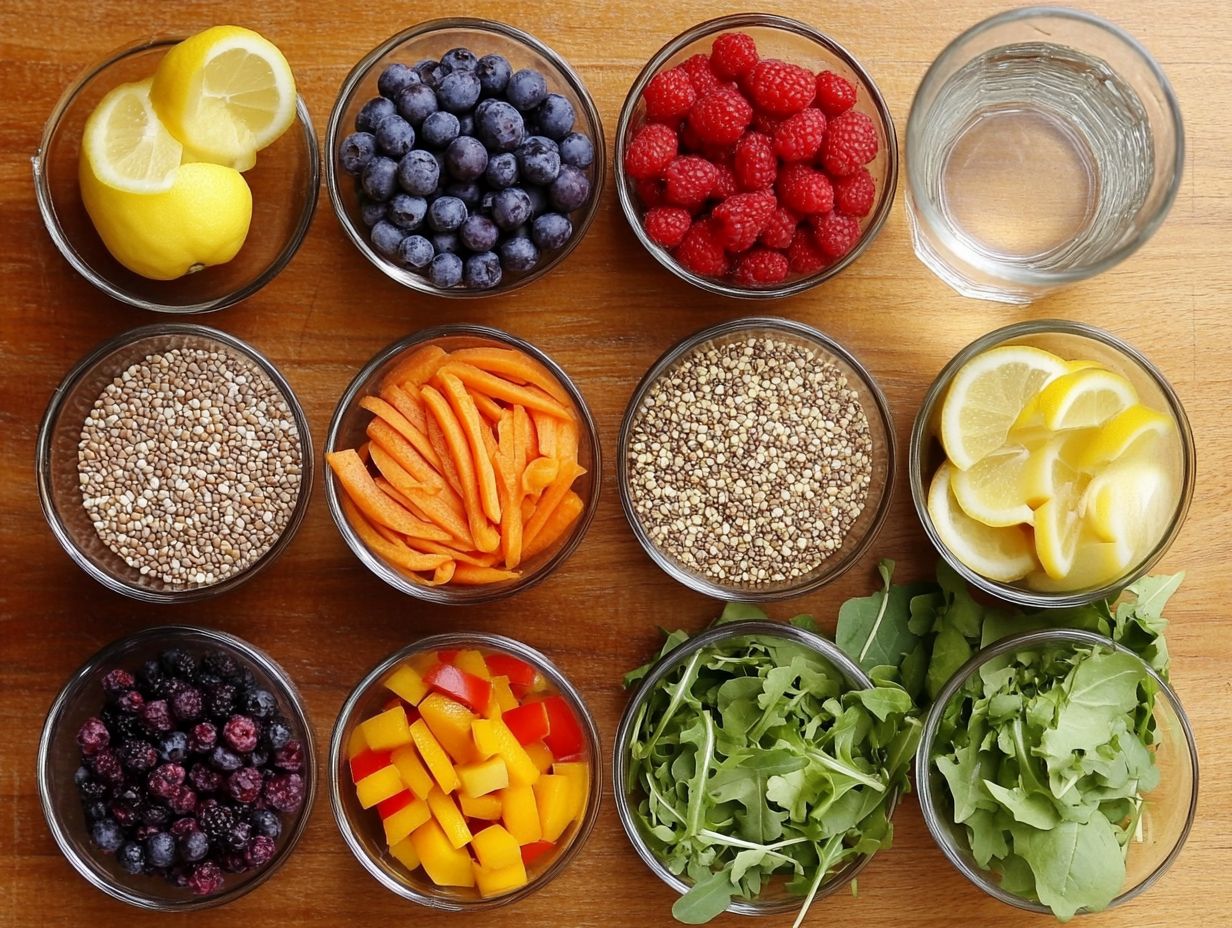 Lentil and vegetable soup is a hearty and nutritious vegan recipe that offers a wealth of fiber and protein, making it an excellent choice for managing blood sugar levels. This soup can be filled with a variety of vegetables, such as carrots, celery, and spinach, and enhanced with herbs and spices to create a comforting meal that satisfies hunger while supporting overall health. Each serving is not only rich in vitamins and minerals but also low in calories, making it ideal for anyone aiming to maintain a healthy weight. Lentils, particularly the brown or green varieties, provide essential nutrients like iron and folate, while the vegetables add extra fiber and antioxidants that promote overall well-being. Additionally, this recipe follows dietary guidelines set by the American Heart Association. To prepare the soup, simply saut diced onions, garlic, and your selected vegetables in olive oil. Then, add rinsed lentils and vegetable broth, seasoning with thyme and bay leaves. Once simmered until the lentils are tender, the soup can be enjoyed hot, offering a fulfilling and nourishing option perfect for any day.
Lentil and vegetable soup is a hearty and nutritious vegan recipe that offers a wealth of fiber and protein, making it an excellent choice for managing blood sugar levels. This soup can be filled with a variety of vegetables, such as carrots, celery, and spinach, and enhanced with herbs and spices to create a comforting meal that satisfies hunger while supporting overall health. Each serving is not only rich in vitamins and minerals but also low in calories, making it ideal for anyone aiming to maintain a healthy weight. Lentils, particularly the brown or green varieties, provide essential nutrients like iron and folate, while the vegetables add extra fiber and antioxidants that promote overall well-being. Additionally, this recipe follows dietary guidelines set by the American Heart Association. To prepare the soup, simply saut diced onions, garlic, and your selected vegetables in olive oil. Then, add rinsed lentils and vegetable broth, seasoning with thyme and bay leaves. Once simmered until the lentils are tender, the soup can be enjoyed hot, offering a fulfilling and nourishing option perfect for any day.
4. Roasted Sweet Potato and Chickpea Buddha Bowl
A roasted sweet potato and chickpea Buddha bowl is a vibrant and nourishing vegan recipe designed to help lower blood sugar levels. It combines fiber-rich sweet potatoes with protein-packed chickpeas. This dish can be topped with leafy greens, avocado, and a tahini dressing, creating a satisfying and balanced meal that promotes healthy eating habits, which are key principles of veganism. Sweet potatoes are not only delicious but also rich in vitamins A and C, antioxidants, and fiber, all of which contribute to heart health and improved digestion. Chickpeas, on the other hand, provide essential nutrients such as iron and magnesium, and are well-known for their ability to help regulate blood sugar levels, making them an excellent complement to this colorful bowl. Including more plant-based foods such as these can provide numerous health benefits while helping to manage conditions like type 2 diabetes. To prepare this delightful dish, follow these steps:
- Start by preheating your oven to 400 F (200 C).
- Dice the sweet potatoes into cubes, toss them with olive oil, salt, and paprika, then roast them for about 25 minutes, or until they are tender.
- Meanwhile, rinse the canned chickpeas and saut them with cumin and garlic powder to enhance their flavor.
- Once everything is cooked, assemble the bowl by placing a bed of spinach or kale at the bottom, adding the roasted sweet potatoes and chickpeas, and drizzling it all with a creamy tahini dressing for a wholesome meal bursting with flavor.
5. Vegan Banana Oatmeal Pancakes
Vegan banana oatmeal pancakes are a delicious and nutritious plant-based breakfast option that can help maintain stable blood sugar levels, thanks to the natural sugars found in ripe bananas and the soluble fiber in oats. With just a few ingredients, these pancakes allow for the addition of various nuts or seeds, making them a versatile and satisfying choice for those following a vegan diet. Incorporating these dietary changes can provide health benefits and help manage insulin levels effectively. Along with their delightful taste, vegan banana oatmeal pancakes offer several nutritional benefits, making them an excellent choice for those following a plant-based diet. Bananas are rich in various vitamins, particularly potassium, which is essential for heart and muscle health. Oats are high in soluble fiber, which helps lower cholesterol levels and increases feelings of fullness, potentially aiding in managing type 2 diabetes by improving insulin resistance and blood sugar levels. Alongside the benefits of bananas and oats, this recipe often incorporates nuts, seeds, and/or plant-based milk, all of which contribute additional nutritional value, including protein and calcium. Consider consulting a registered dietitian for personalized dietary guidelines, especially if you are managing metabolic fitness or conditions like metabolic syndrome and obesity.
Vegan Banana Oatmeal Pancakes Recipe: A Delicious Part of a Healthy Plant-Based Diet
Ingredients: Incorporating Healthy Whole Grains and Dairy Alternatives
- 2 ripe bananas (mashed)
- 1 cup rolled oats
- 1 cup plant-based milk (such as almond, soy, or oat milk), providing a great source of dairy alternatives and fortified foods like vitamin B12.
- 1 tsp baking powder
- Salt to taste, with optional additions like legumes or vegetables for extra nutrients.
Instructions: Crafting Nutritious and Healthy Meals
- In a bowl, mash the bananas.
- Add the rolled oats, plant-based milk, baking powder, and salt. Stir until well combined.
- Allow the mixture to sit for a few minutes to thicken, allowing the oats to absorb the plant-based milk and expand.
- Heat a non-stick skillet over medium heat. Pour a scoop of the mixture into the pan.
- Cook until bubbles form, about 2-3 minutes. Flip and cook for an additional 2 minutes or until lightly golden brown.
- Remove from heat and serve warm with maple syrup and fresh fruit for added nutrients and flavor, a perfect choice for those mindful of reducing processed sugars and animal products. Enjoy these pancakes as part of a balanced diet that promotes the health benefits endorsed by the American Diabetes Association and the American Heart Association.
